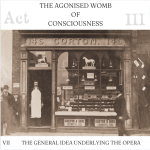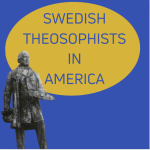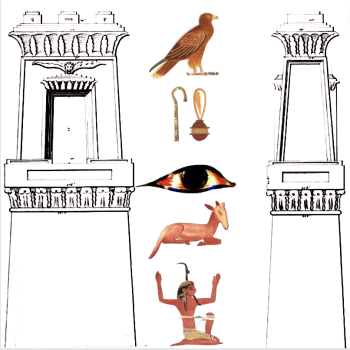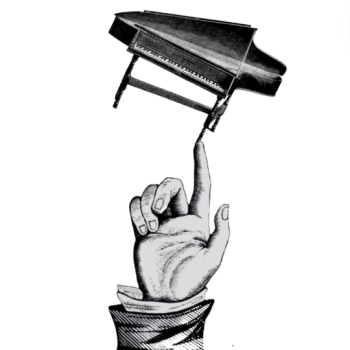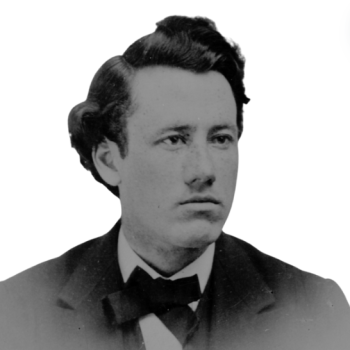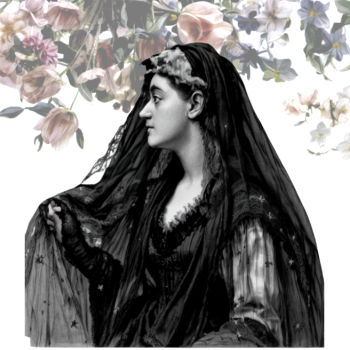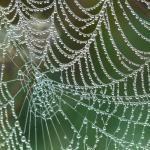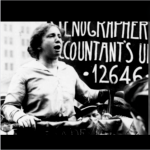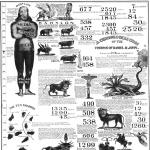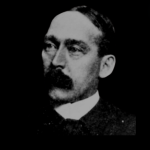THE DECAY OF LYING
ACT III.
VIII.
⸻
Willie Yeats joined the Esoteric Section of the Theosophical Society just before Christmas 1888. He took no exception to the pledge, save for two clauses, which he explained to Blavatsky.
“The promise to work for Theosophy, and the promise of obedience to you in all Theosophical matters,” said Yeats. “I can only sign on the condition that I myself am to be judge as to what Theosophy is, and I consider my work at Blake a wholly adequate keeping of this clause.”
“My dear, this obedience only refers to things concerning occult practice—if such should be called for.”[1] Blavatsky looked at Yeats’ outfit and smiled playfully.
“Oscar Wilde asked me to eat my Christmas dinner at his house,” said Yeats. “He seems to think that I am alone in London.”
“Remember dear, don’t take off your beard.”[2]
~
Later that evening Yeats arrived at the little house at Chelsea that the architect Godwin had decorated. He was delighted by Wilde’s pretty wife, Constance Lloyd, and their boys Cyril and Vyvyan. Yeats had never met a conversationalist like Wilde before. He was equally perplexed by his own shapelessness, and self-possession as he was of Wilde, who had not yet written a successful play and was still a poor man. As a scholar, and a man of the world, Wilde seemed perfect to Yeats.
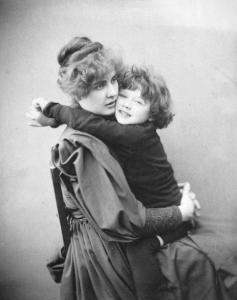
Constance Lloyd Wilde and Cyril Wilde c. 1889.
After dinner Wilde and Yeats retired to a drawing-room where nearly everything was white—the chairs, walls, cushions, everything, mantelpiece, even the carpet. In the middle of the table, however, there was a diamond-shaped piece of red cloth in the middle of the table under a red terra-cotta statuette. Above it was lamp with a red lamp-shade hanging from the ceiling to a little above the statue. Wilde produced the proof sheets from his forthcoming essay in the January issue of The Nineteenth Century. It was titled “The Decay of Lying.” In recitation, Wilde spoke with molassine slowness—a drawling-affect which he lifted from Walter Prater’s speech. He believed this gave him greater freedom of language:
The imagination is essentially creative and always seeks for a new form. The boy-burglar is simply the inevitable result of life’s imitative instinct. He is Fact, occupied, as Fact usually is, with trying to reproduce Fiction and what we see in him is repeated on an extended scale through the whole of life. Schopenhauer has analyzed the pessimism that characterizes modern thought, but Hamlet invented it. The world has become sad because a puppet was once melancholy. The Nihilist, that strange martyr who has no faith, who goes to the stake without enthusiasm, and dies for what he does not believe in, is a purely literary product.[3]
“Why have you varied the word—are not sadness and melancholy the same?” asked Yeats.
“I wanted a full sound at the close of that sentence,” Wilde replied.
Yeats thought this was a poor excuse, illustrative of the vague “impressiveness” that spoiled Wilde’s writing for him. In truth, Yeats did not much care for Wilde’s writings aside from the wit. It was the man himself that Yeats admired, for he showed so much loyalty to the intellect. “He is one of our eighteenth-century duelists born in the wrong century,” Yeats would say of Wilde to the young men of letters who decried him (as was the fashion among the Irish writers.) “He would be a good leader in a cavalry charge.”
“Ah, Yeats, we Irish are too poetical to be poets—we are a nation of brilliant failures,” said Wilde. “But we are the greatest talkers since the Greeks.”[4]
Yeats focused his eyes on the Whistler etchings on the wall as Wilde concluded his reading:
The last doctrine is that Lying, the telling of beautiful untrue things, is the proper aim of Art. But of this I think I have spoken at sufficient length. And now let us go out on the terrace, where “the milk-white peacock glimmers like a ghost,” while the evening star “washes the dusk with silver.” At twilight nature becomes a wonderfully suggestive effect and is not without loveliness, though perhaps its chief use is to illustrate quotations from the poets.[5]
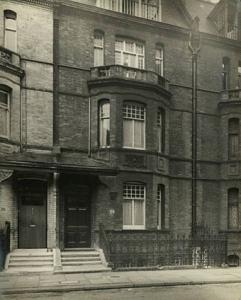
Wilde’s Home, 34 Tite Street, Chelsea.
← →
THE AGONIZED WOMB OF CONSCIOUSNESS SECTIONS: “ACT III”
I. TOWER HAMLETS.
III. OCCULTISM OF SOUTHERN INDIA.
IV. THE ONE WHO THINKS HE KNOWS.
VI. WHERE VISHNU SLUMBERS IN HIS SEA-GIRT SHRINE.
VII. THE GENERAL IDEA UNDERLYING THE OPERA
VIII. THE DECAY OF LYING
IX. THE FENIAN
SOURCES:
[1] Yeats, William Butler; Donoghue, Denis (ed.) Memoirs. Macmillan, London, England (1972): 238.
[2] Yeats, William Butler. Letters To Katharine Tynan. McMullen Books, Inc. New York, New York (1953): 119; Yeats, William Butler. The Collected Letters Of W.B. Yeats: Vol. I 1865-1895. Edited by John Kelly and Eric Domville. Clarendon Press. Oxford, England. (1986): 212.
[3] Wilde, Oscar. “The Decay Of Lying.” The Nineteenth Century. Vol. XXV, No. 143 (January 1889): 36-56.
[4] Yeats, William Butler. Four Years. The Cuala Press. Dunlin, Ireland. (1921): 21-22; Yeats, William Butler; Donoghue, Denis (ed.) Memoirs. Macmillan, London, England (1972): 21-23; Jeffares, A. Norman. W.B. Yeats: A New Biography. Continuum. London, England. (2001): 33.
[5] Wilde, Oscar. “The Decay Of Lying.” The Nineteenth Century. Vol. XXV, No. 143 (January 1889): 36-56.


